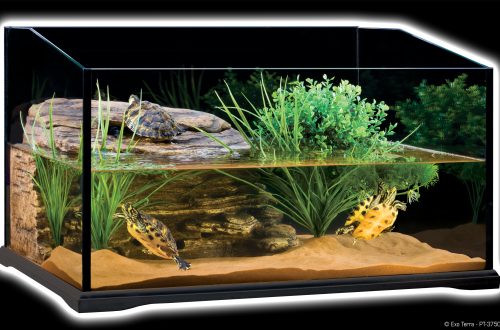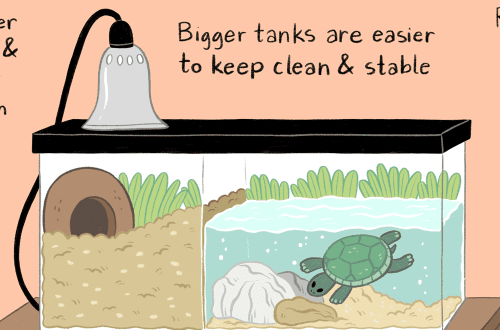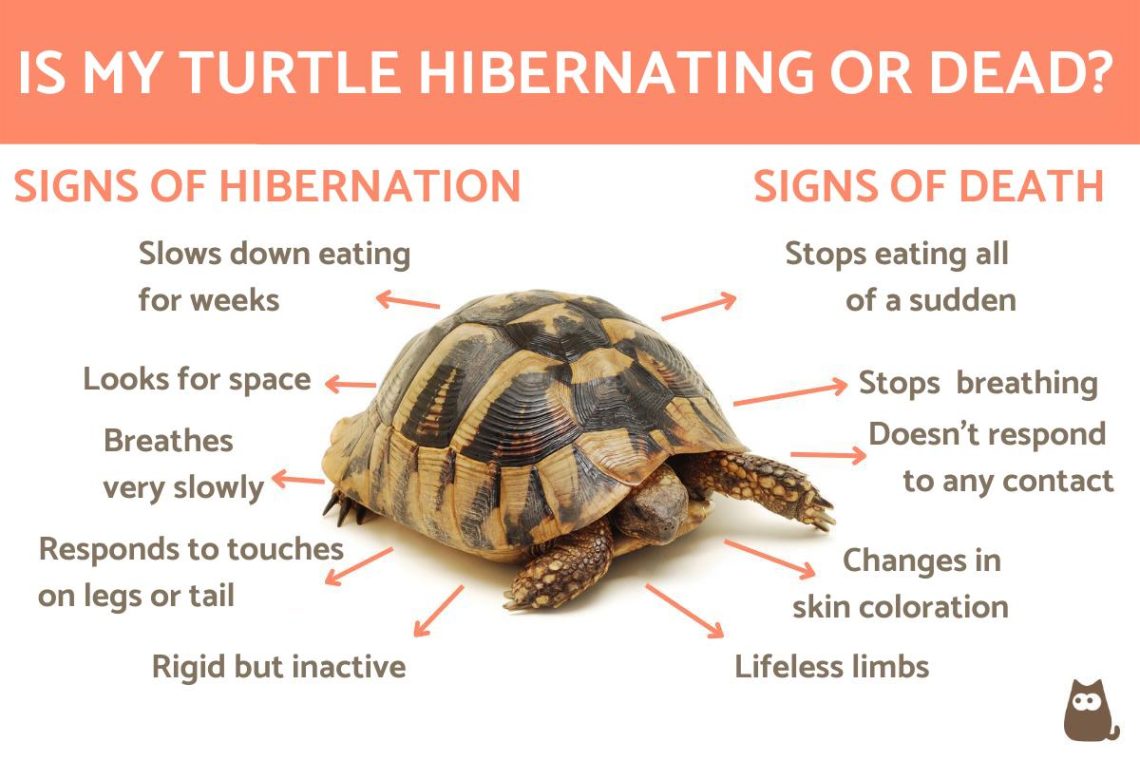
Hibernation in domestic tortoises: signs, causes, care (photo)
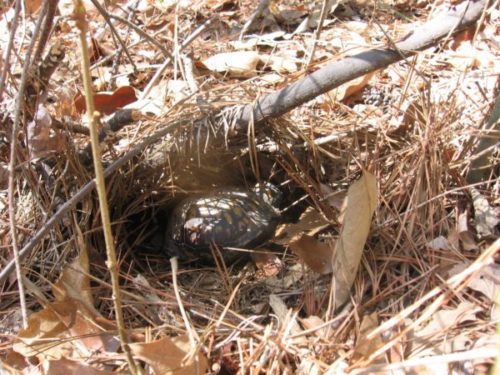
Under natural conditions, hibernation for many species of turtles is quite normal. The sleep of reptiles is associated with adverse external conditions. When the temperature drops to + 17- + 18C, and the daylight hours decrease, the turtle fits into a pre-dug hole and falls asleep from December to March. The wake-up signal is the same temperature that begins to rise. At home, natural processes are disturbed, and only experienced terrariumists can correctly introduce and remove an animal from a state of suspended animation.
Contents
Pros and cons of hibernation
When land tortoises hibernate, the heart rate decreases, breathing becomes barely audible, and metabolic processes are reduced. This allows you to save the accumulated nutrients and water, which are consumed to a minimum. The state of suspended animation is beneficial for the health of the animal:
- the balance of hormones is maintained due to the normal functioning of the thyroid gland;
- increased sexual activity of males;
- in females, eggs are formed normally and on time;
- the possibility of obtaining offspring increases;
- weight gain is controlled.
With improperly organized wintering, the turtle may die or come out of hibernation sick. If the animal is ill, then on the eve of wintering it must be cured or sleep canceled. Sick and newly brought reptiles are not introduced into anabiosis.
Sleep duration or its cancellation
Turtles usually sleep at home in the winter. On average, this period lasts 6 months (from October to March) in adults, young animals sleep for 2 months. But these figures can change based on specific conditions: hibernation can last 4 weeks or sleep can last up to 4 months. The land tortoise hibernates for an average of 1/3 of the year.
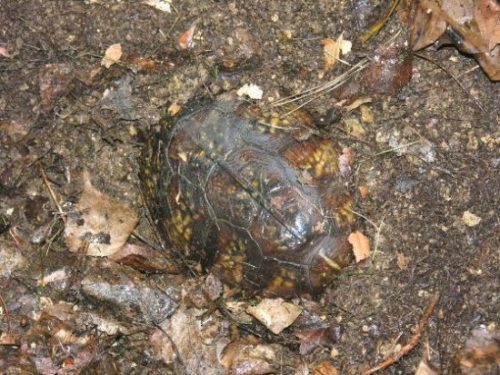
Note: It is advisable to lull the turtle so that in February, with the growth of daylight hours, it comes to its senses, gradually moving to an active lifestyle.
To prevent the turtle from hibernating, you need to monitor the high temperature in the terrarium and often carry out water procedures. If she becomes inactive, you need to take a course of vitamin injections or introduce dietary supplements into the diet. To prevent the turtle from hibernating is a mistake, as the animal is weakening and feeling unwell, its normal physiological rhythms are disturbed.
How to help the turtle sleep?
First you need to determine how the reptile behaves, which is ready to fall asleep:
- she eats poorly;
- constantly hides his head in a shell;
- becomes inactive;
- constantly looking for a secluded place;
- sitting in a corner or digging in the ground to create a “winter shelter”.
This is a signal that the pet is tired and ready for winter sleep. It is necessary to carry out preparatory measures so that this dream is complete and the animal feels good.
Note: You need to know exactly the species and subspecies of your indoor reptile in order to be firmly convinced that hibernation is a normal physiological process for this species. There are species that do not sleep in nature, then at home sleep is contraindicated for them.
Land Central Asian tortoises hibernate at home if the following preparatory work is carried out:
- Before “wintering”, she needs to be properly fattened and offered more fluids to replenish her fat and water reserves before bed.
- 2 weeks before sleep, the land reptile is bathed in warm water and stopped feeding, but given water. The intestines must be completely free of food.
- Then they begin to reduce the duration of daylight hours and reduce the temperature regime. Do this gradually so that the turtle does not catch a cold and does not get sick.
- Prepare a plastic container with holes for air, which will serve as a “burrow for wintering”. It should not be large, since the sleeping animal is inactive.
- The bottom is covered with wet sand and a layer of dry moss up to 30 cm. A turtle is placed on the moss and dry leaves or hay are thrown. It is necessary to ensure the humidity of the substrate, but it should not completely get wet.
- The container is left at room temperature for a couple of days, and then placed in a cooler place (+5-+8C). A corridor at the entrance or a closed, poorly heated loggia, but without drafts, will do.
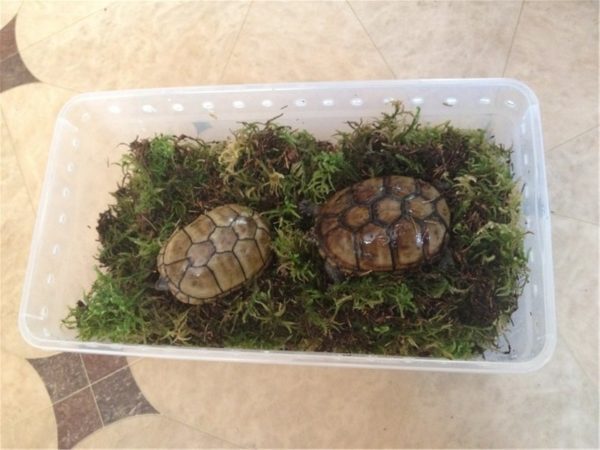
Tip: When the animal falls asleep, it must be constantly inspected and sprayed with soil to maintain the desired moisture. It is advisable to look into the container every 3-5 days. Once a month and a half, the reptile is weighed. It is normal if it loses mass within 10%.
How do turtles go to sleep in the ground?
It happens that indoors it is difficult to create conditions suitable for wintering. Then, during warm winters in the southern latitudes, they arrange a “house” in the garden.
A wooden, dense box is slightly dug into the ground and insulated from all sides with straw and foliage. Sawdust and a thick layer of sphagnum moss are poured at the bottom. Here the turtle can sleep for a long time without being afraid of the attack of predators (the box is covered with a net).
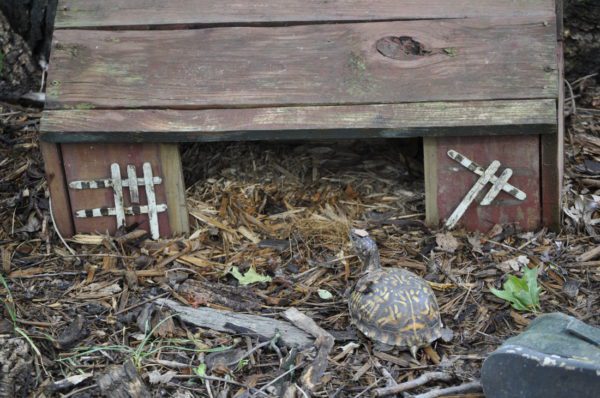
Winter hibernation in the fridge
Another option for a “wintering” device is to put a box with a turtle on a refrigerator shelf. It is important to pay attention to the following points:
- large volume of the refrigerator;
- food cannot be placed in a box with an animal;
- the box cannot be moved close to the walls, where it is much cooler;
- ventilate the refrigerator a little by opening the door for a short while;
- maintain the temperature at the level of + 4- + 7C.
If there is a basement, then it is also suitable for wintering reptiles. It is important to maintain a constant temperature and humidity.
Gentle sleep pattern
There is such a concept: to warm up hibernation, when the animal is partially asleep and is at rest for some time. This is called “wintering in a gentle mode.” Moisture-retaining soil made of moss, sawdust, peat is poured into the terrarium to a height of up to 10 cm. This mixture maintains moisture.
The light regime is 2-3 hours a day, and then they create complete darkness for about two weeks. The average daily temperature is kept at around + 16- + 18C. When wintering declines and conditions change, the reptile comes to life a little and food is offered to it.
Tip: What to do if a land tortoise hibernates without the help of the owner? It must be removed from the terrarium and placed in the appropriate conditions for “wintering”.
hibernation signs
You can understand that a land tortoise has hibernated by a number of signs:
- she is not active and has almost stopped moving;
- eyes closed;
- head, paws and tail are not retracted, are outside;
- breathing is not heard.
The Central Asian tortoise in hibernation can move its limbs slightly, but does not move. Usually the animal is absolutely motionless. Signs of hibernation in a tortoise are similar to signs of death, so sometimes pet lovers try to find out if the tortoise is alive or sleeping? It is not necessary to take care of her during this period, only regularly check her condition.
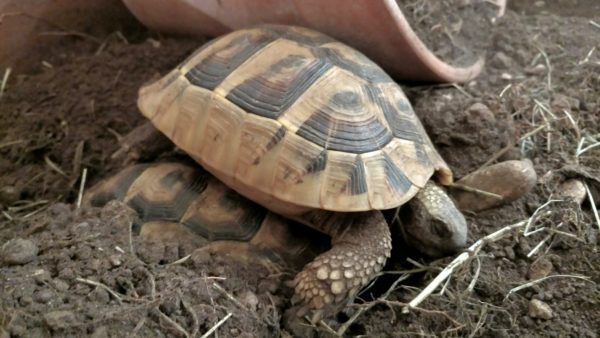
Awakening
After 3-4 months of sleep, the decorative reptile wakes up on its own. How to determine that the turtle is awake? She opens her eyes and begins to move her limbs. The first few days the animal does not show much activity, and then comes to its normal state.
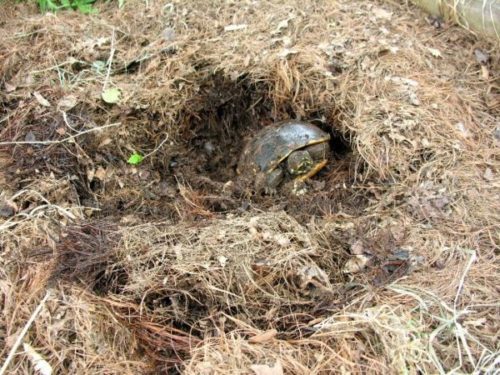
If the pet does not wake up, it should be transferred to a terrarium where it is warm (+20-+22C) and switch to a normal light regime. When the turtle looks weak, emaciated and inactive, warm baths will help.
The turtle is then given the food it likes. For the first few days, she has little interest in food. If on the 5th day the food “does not go well” and the animal refuses to eat, then a veterinarian’s consultation is needed.
Possible mistakes when creating conditions for wintering
Turtles can go into hibernation, but not come out of it if the owner has made the following mistakes:
- put a sick or weak reptile to bed;
- did not maintain a sufficient level of humidity;
- allowed temperature changes;
- did not notice parasites in the litter that could damage the shell;
- woke her during this period, and then put her to sleep again.
Even one of these shortcomings can lead to the death of the animal and your pet will not wake up.
Hibernation at home is necessary for a turtle, otherwise its biological rhythms get lost. The owner must take all necessary measures to make it successful. No one knows their pet better than the owner. You just need to watch the turtle so that its well-being is always under control.
Video: about preparing for wintering
How and when Central Asian land tortoises hibernate at home
3.2 (64.21%) 19 votes



